Entering assets
In this article
Customarily, long-lasting purchases (called “assets”) are treated differently from regular expenses. Consider two purchases as an example: 1. a company truck and a tank of fuel to power it. The fuel is a short-lived purchase - buy it in January, use it in January. That’s how regular expenses work.
The truck is different, though. It’s an expensive purchase, and it won’t be gone at the end of the first month. A good truck will deliver value for years to come, so it makes sense to spread out its cost over time. That’s the idea behind asset purchases.
When you enter an asset into your forecast, the system will place its full value in your financial statements and then calculate the amount of value it will lose (through amortization or depreciation) each month over its useful life.
If you plan to get a loan to pay for an asset (as in the company truck example), be sure to add that loan separately on the Financing page. All we’re doing here is adding the asset itself.
NOTE: Not all assets are covered here. Cash, accounts receivable, and inventory are assets too, but we address those separately in our forecast. Just focus here on long-lasting purchases like equipment, vehicles, or furniture. You can also use this feature to spread out the expense of annual contracts or other short-term assets.
Adding a Long-term Asset:
- 1
-
From the workspace menu, click on the Finance Forecasting module to open it.

Here, under the Forecast tab, click on the Assets section. Then click on the Add Assets Group. A pop-up will appear, add the assets group name, and click on Save & Next.

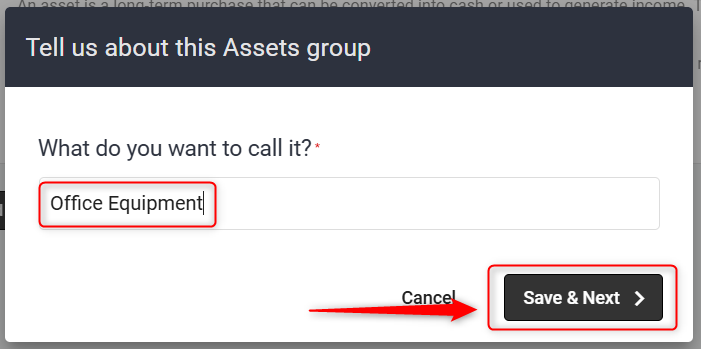
Forecast Form overlays for you to start entering individual assets. Go to Step 2 if you want to start entering the assets, or close the Forecast Form Overlay to check the Asset Group you just created. Now, click on the Add Assets to start entering individual assets.
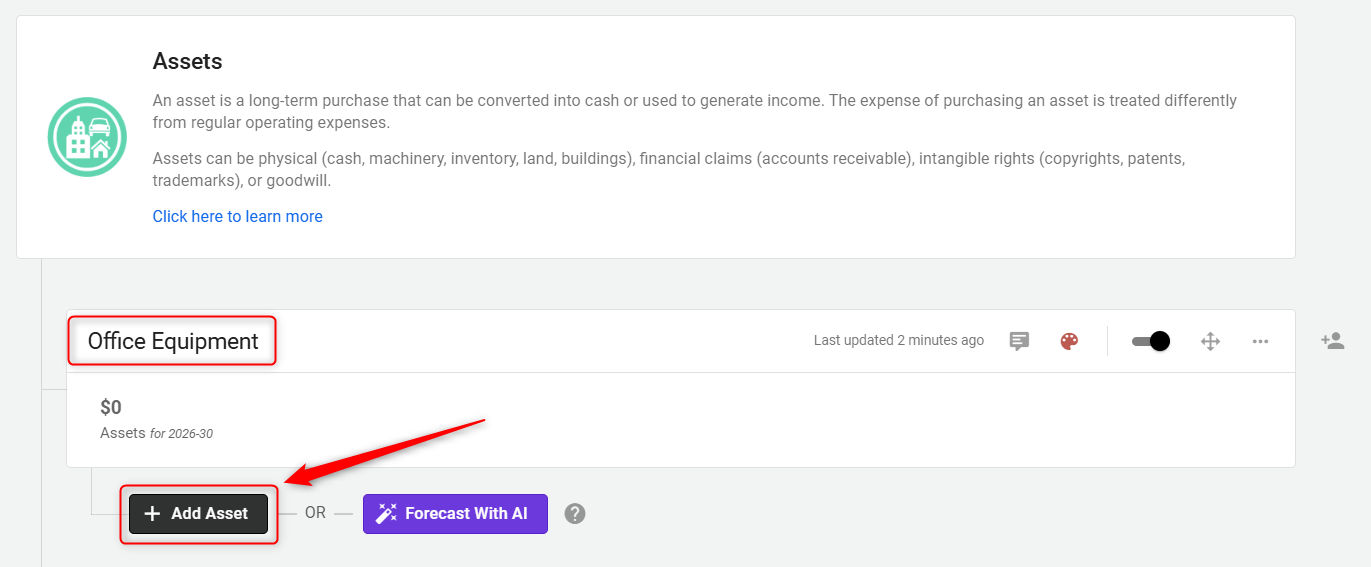
- 2
-
In the overlay that appears, enter a name for the assets (or a short description):

- 3
-
Choose the Long term for the asset type, and enable the toggle if the assets were in place before the start of the plan.

- 4
-
Choose how you want to enter the asset. Will you pay a one-time amount for it, pay the same amount per month/year for it, or pay varying amounts per month/year for it?

- If you choose a One-time purchase, enter the expected purchase price and purchase date:

- If you choose a Constant amount (Recurring), enter how much you will pay for it (per month or year), and when that payment will begin:
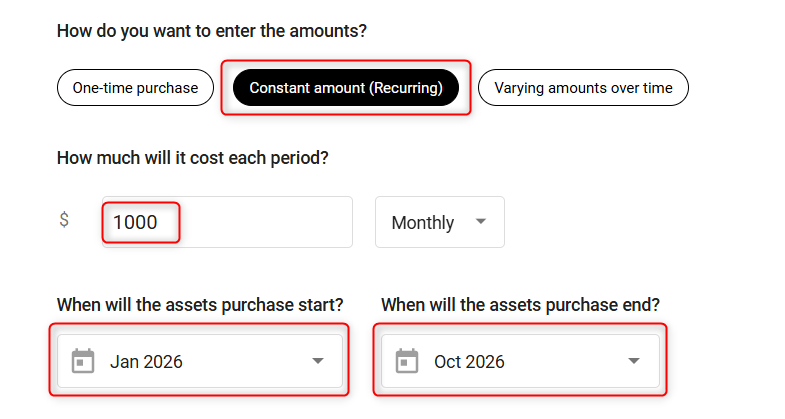
If you choose Varying amounts over time, you will need to manually input the details in the Forecast Sheet. The Forecast Sheet is available once you complete filling up this Forecast Form and click on Save at the end.
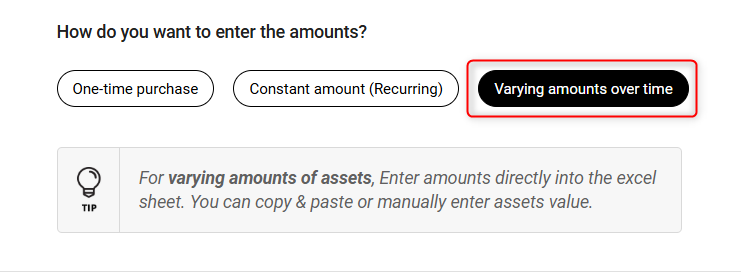
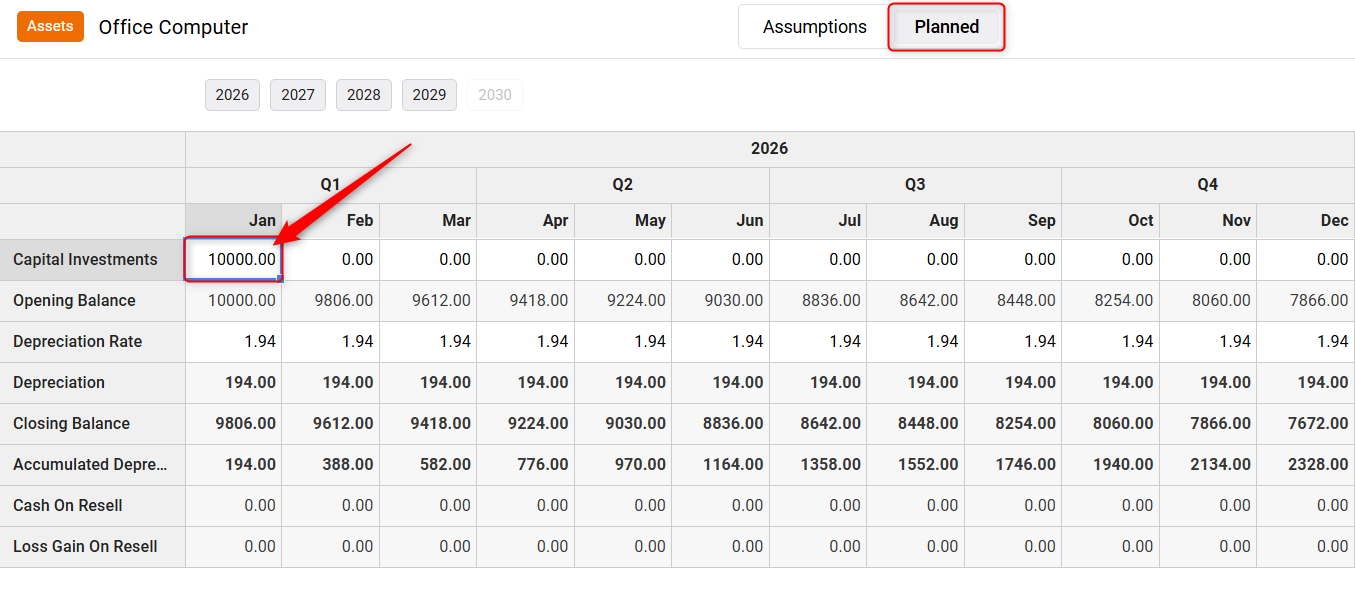
- If you choose a One-time purchase, enter the expected purchase price and purchase date:
- 5
-
Depreciation: Indicate the useful life of the asset, which will help calculate the depreciation. If this asset won't depreciate, choose Forever (do not depreciate) at the bottom of the list:
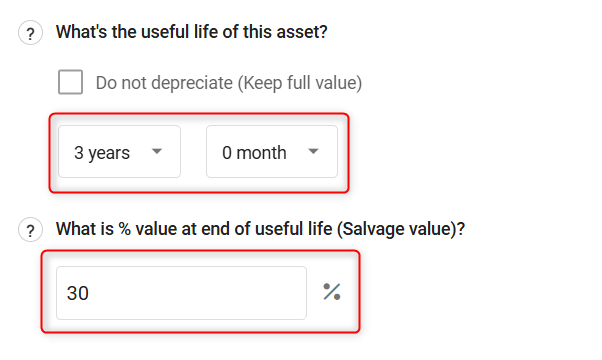
Finally, if you chose " One-time amount" on the previous step of the overlay, you'll see an option that asks you to indicate whether you plan to sell this asset during the period covered by your forecast.
Once it is done, click on Save.
NOTE: If you don't see this option in your overlay, it means that you chose a constant or varying payment for the asset in the previous step of the overlay.
TIP: To add equipment or machinery to your finance section, check out this help guide.
Determining the useful life of a Long-term Asset
For more details on how to choose the useful life of an asset, see Depreciation, Amortization, and Determining the useful life of an asset.
Adding Current Assets
A current asset is one that is used up within 12 months (for example, an annual service contract). For more details, learn more about the difference between a long-term asset and a current asset.
- 1
-
Under the Forecast tab of the Finance Forecasting module, click on the Assets tab, and then click the Add Assets Button:
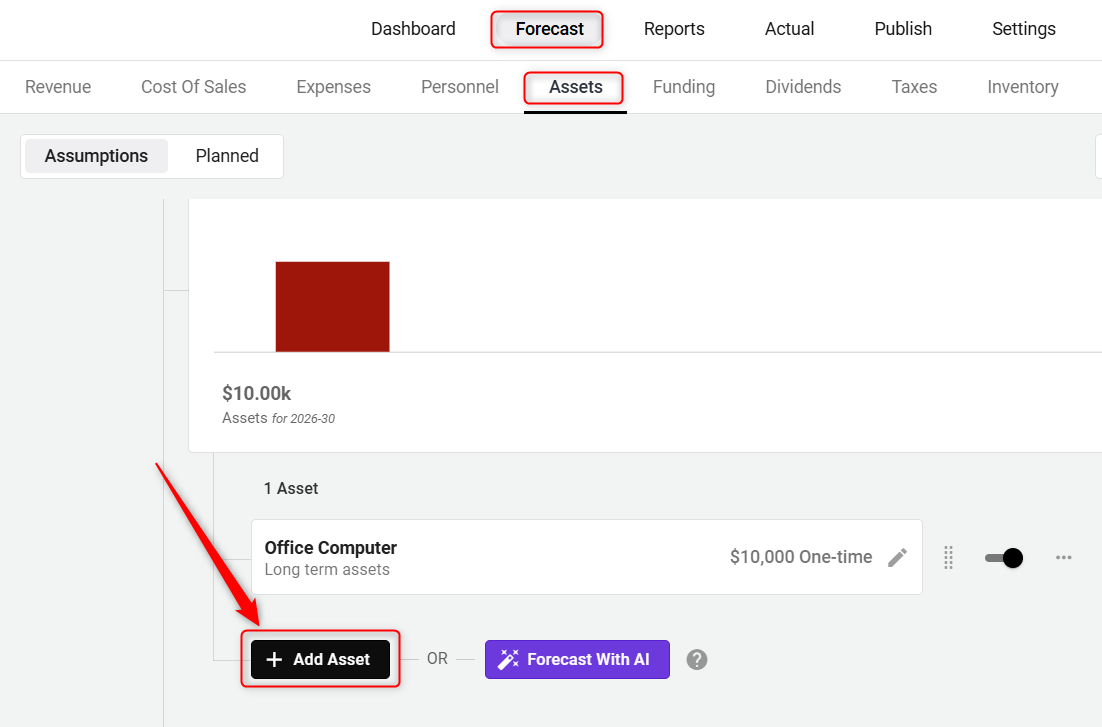
- 2
-
In the overlay that appears, enter a name for the assets (or short description):

- 3
-
Click Current to indicate that this is a current asset and turn on the toggle if the assets were in place before the start of the plan.

- 4
-
Choose how you want to enter the asset. Will you pay a one-time amount for it, pay the same amount per month/year for it, or pay varying amounts per month/year for it?

- If you choose a One-time purchase, enter the expected purchase price and purchase date:
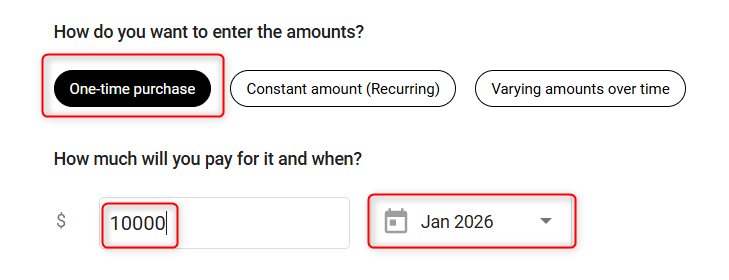
- If you choose a Constant amount, enter how much you will pay for it (per month or year), and when that payment will begin:
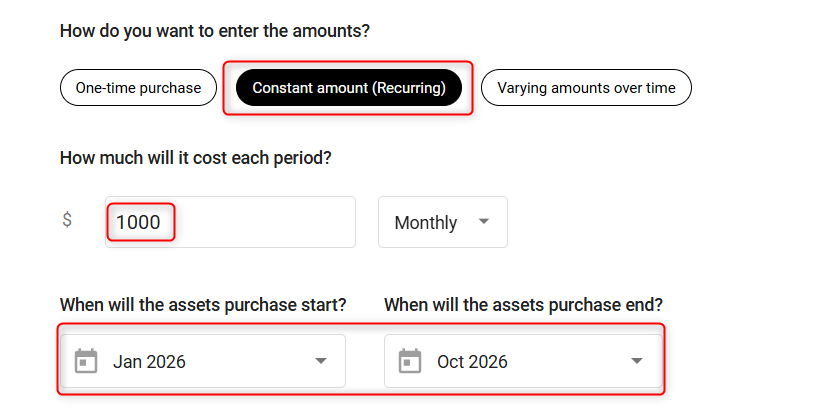
If you choose Varying amounts over time, enter how much you will spend in the Forecasted Excel sheet, in the months in which you'll spend it. The Forecast Sheet is available once you complete filling up this Forecast Form and click on Save at the end.

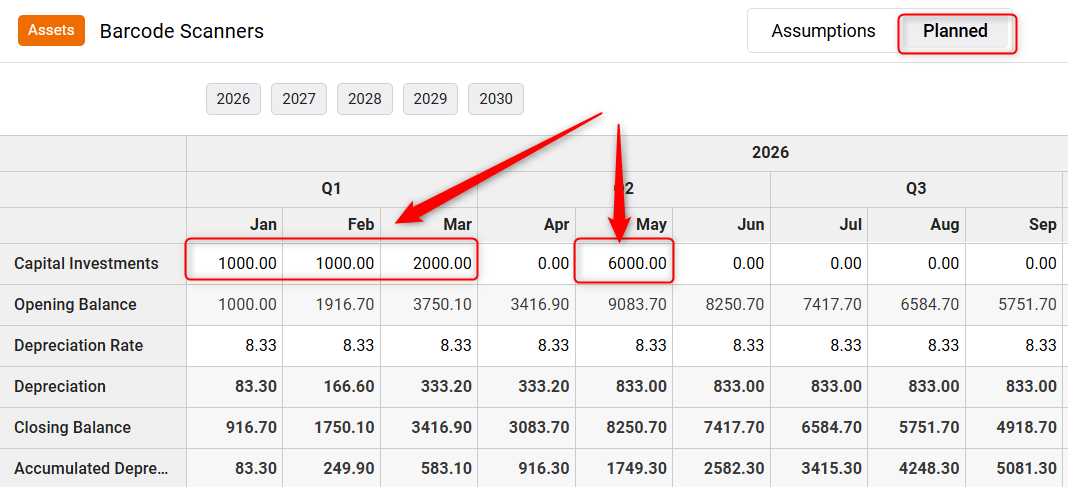
- If you choose a One-time purchase, enter the expected purchase price and purchase date:
- 5
-
Select the length of time that this current asset will provide value, so the system can amortize that value.
If you don't want to amortize it at all, choose the Do Not Amortize (Keep at full value) option at the bottom of the list and click on Save.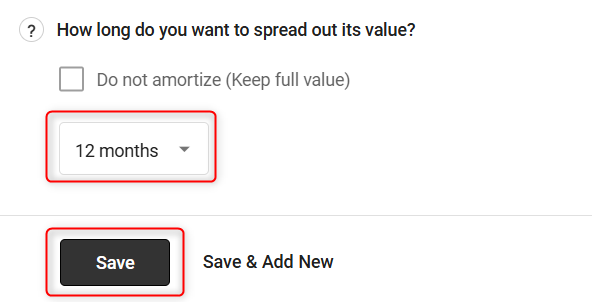
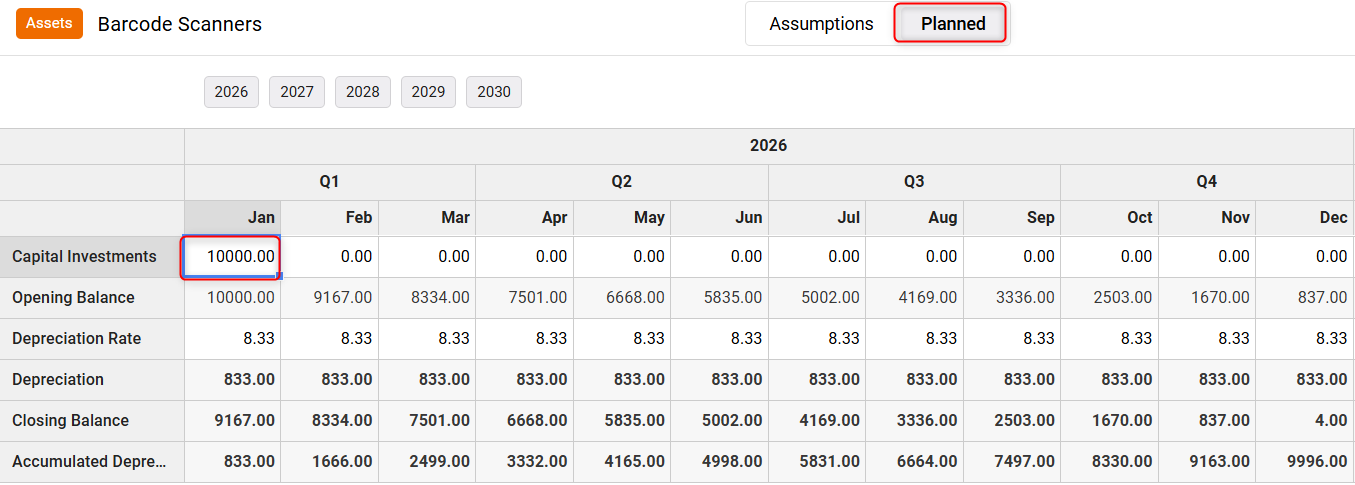
Where does this entry appear in the financial statements?
Assets can be entered as Current Assets or Long-term Assets, and these two entries appear in different parts of the financials. In the Profit and Loss table, only the depreciation and amortization of an asset will be listed, as this is the only part of the asset that's considered an expense of daily operations.
The amortization of a current asset will appear under Operating Expenses in the P&L. The depreciation of a long-term asset will appear in the P&L under Additional Expenses, as shown below:

In the Balance Sheet, a current asset will appear as "Other Current Assets," with its value decreasing month to month as the asset is amortized.
A long-term asset appears in the Balance Sheet as shown below. You can see the value of the asset and the depreciation on separate lines:

In the Cash Flow statement, both short-term and long-term assets will appear as shown below. The value of the Asset Sell and Asset purchase appears in the Cash Flow as below:
























